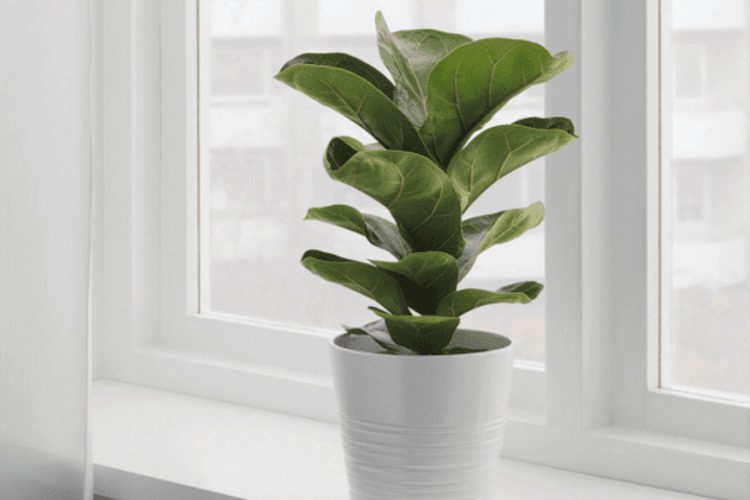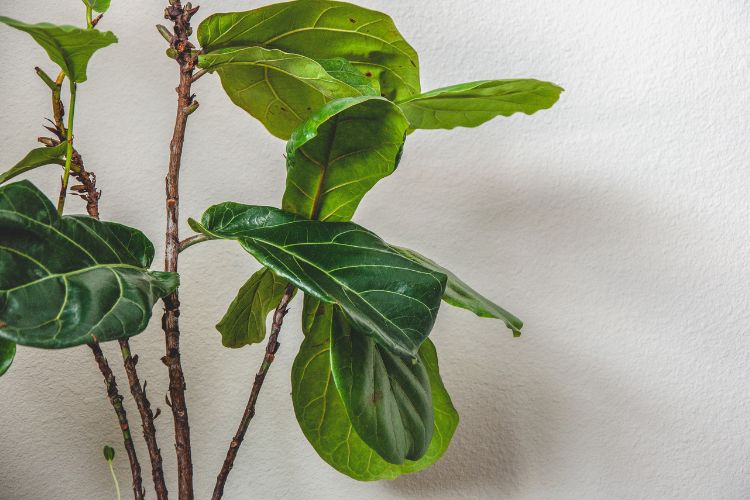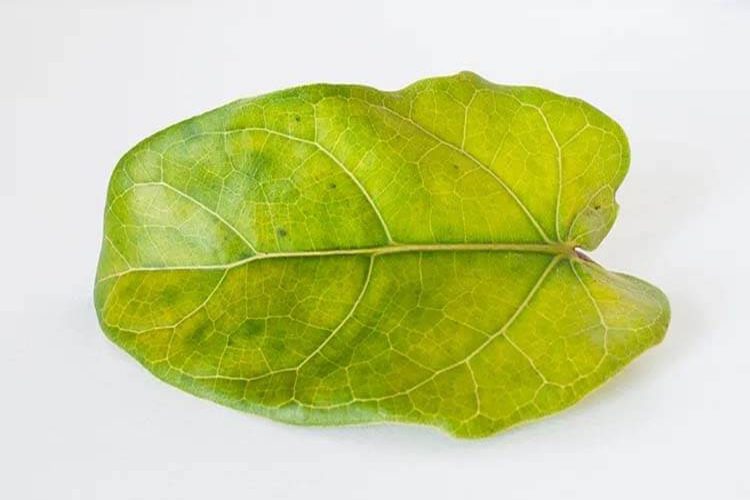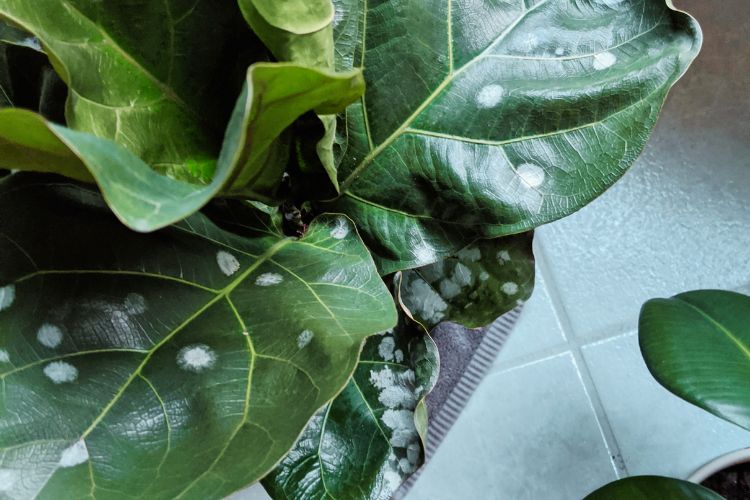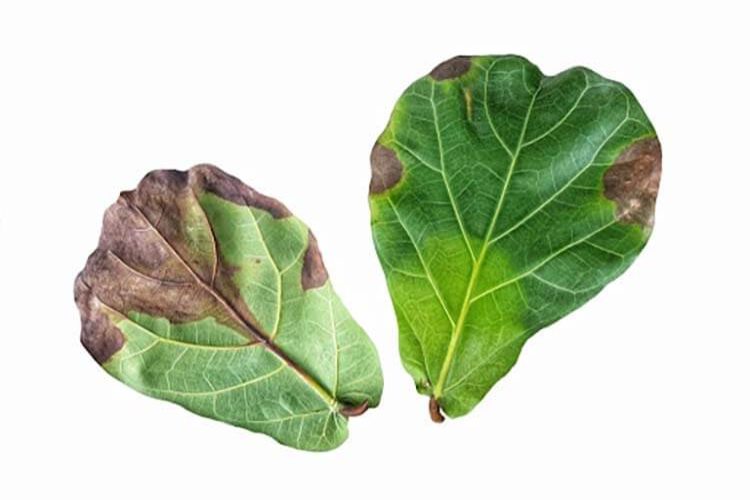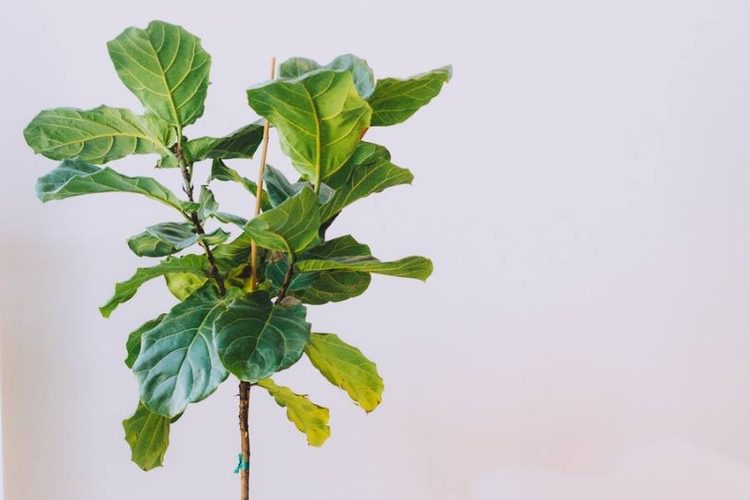How To Clean Fiddle Leaf Fig Leaves? 5 Effective Ways

F. Lyrata is a great plant to grow indoors because it is beautiful, tall, and has an impressive appearance. However, to maintain its beauty, the owner also needs to know how to take care of this plant. This plant is very easily soiled on the foliage because of the dirt in the environment. So, this article will show you “How to clean fiddle leaf fig leaves?”. Now, let’s read on to find out!
How To Clean Fiddle Leaf Fig Leaves?
There are five ways to clean fiddle leaf fig leaves: Using a hose, showering, using a cloth to wipe the leaf, washing in the sink, and applying other cleaning solutions. You can use a cloth and a spray bottle to gently spray water to help clean the leaves of the plant. To talk about how to clean F. Lyrata leaves, we will have many methods that you can refer to. You can choose the appropriate cleaning method depending on the living space, climate, and plant size.
1. Using A Hose To Spray The Plant Off
The best way to clean fiddle fig leaves is to bring the plant outdoors and use a hose to clean the leaflets. Check local regulations before using a hose to clean Fiddle leaf fig leaves outdoors. Rinse thoroughly to ensure all dirt is removed. After cleaning, it is best to bring the plant back indoors and avoid leaving it outside overnight or in direct sunlight.
However, this method presents some challenges for too heavy or oversized plants because moving them outside would be laborious. The best way is to keep the large fig leaf on your rolling stand for convenience. Also, some areas do not allow you to use the hose outdoors. You should also not apply them in cold climates.
2. Showering Your Plant
The second way to clean F. Lyrata leaves is to bring your Ficus Lyrata into your bathroom and rinse them off in the shower. When showering Ficus Lyrata plants, gently tilt the plant to the side to ensure that water reaches the underside of the leaves. After showering the Ficus Lyrata plant, allow it to dry for a sufficient amount of time before returning it to its original location.
3. Wipe The Leaf With A Cloth
One of the most notable methods is to wipe the surface of the leaves with a soft cloth to clean them. The purpose of using a soft cloth is to avoid damaging the leaves. Sometimes, leaflets with stubborn dirt will need a little water to clean. F. Lyrata enthusiasts will probably have to keep a spray bottle with them for convenience. Sprinkle some water on the surface and use a soft cloth to wipe it off.
Instead, wipe gently and slowly all over the surface. This method will take a lot of time. In the end, many people find this method messy and cumbersome because the dirty water will drip around their potted plants. You can place a towel under the potted tree to protect the floor. Just be gentle when caring for leaves; you will get good results.
4. Washing In The Sink
With small to medium-sized figs, you can put them in the sink to use the kitchen spray. Use warm water to spray each leaf to lightly remove dirt from the surface. Small potted plants can be cleaned very simply. Fill a small basin with water and a bit of detergent, then gently rub the leaflets with your hands.
You can water the plant thoroughly the day before to keep the soil moist. When washing leaves, we tend to tilt the pot to one side, which can spill the soil on the floor.
5. Using a Cleaning Solution
The last method on the main list uses the cleaning solution to polish Ficus Lyrata leaves. These substances can make leaflets look clean, shiny, and beautiful. One of the prevalent compounds is “leaf shine.” Many people use them to help make the leaves look as shiny as possible and to help clean things up quickly.
After using this compound, your leaflets will be shiny, and Ficus Lyrata will look even more vibrant. A helpful tip when choosing the correct cleaner is to buy solutions that don’t have an odor. Besides, select good drugs so as not to clog the pores of the leaves. The price to buy a leaf shine solution is relatively low. So, you can choose it as an additional option to make your leaflets nice and clean. The place to buy this spray is quite popular, as you can find it in most online stores, garden supply centers, and local department stores.
Quality foliage paints also help protect plants from certain fungi and pests, such as mealybugs and spider mites. You can decide whether to use it or not. However, consider choosing a reputable brand and an effective dosage if you want to use it. Another popular supplement that many people recommend is Neem oil. Although its smell can linger, this oil is resistant to pests and diseases.
Why Do You Need To Clean Ficus Lyrata Leaves?
Leaves need photosynthesis to grow and become green. Ficus Lyrata consumes carbon dioxide and light to become stronger. If the leaves are dusty and dirty, they cannot get the necessary nutrients.
The leaves of the plant not only act as the lungs and skin of F. lyrata; Therefore, you must also keep them clean and dust-free to limit disease and wilt. Besides, neglecting to wipe the leaflets for too long will affect the aesthetics of the space. No one wants to see branches covered in bushes when visiting someone else’s house.
How Often Should You Clean F. Lyrata Leaves?
The frequency of leaf cleaning on young figs can vary depending on your habitat. You should clean fig leaves in homes with many pets and dusty environments once a week. On the other hand, other families may only need monthly cleanings.
Many people apply a rule to dust off fig leaflets whenever they sweep or water. You can blow on the leaflets to determine if the fig leaves need cleaning. If the leaflets are so dirty and dusty that a blast of air can push them away, clean them. Cleaning the leaf surface when watering also ensures that the soil does not absorb too much water, causing root rot.
On average, you should water your Ficus Lyrata seven to ten times per day. However, the most crucial factor in determining when to water plants is observing the condition of the soil. Touch the top two inches to see if the soil is moist or dry before watering. If the soil is too dry, schedule a time to water the plants. On the contrary, you should not add more water because you don’t want to harm Ficus Lyrata.
Do’s And Don’ts Of Cleaning F. Lyrata Leaves
Wiping F. Lyrata leaves will be a process with lots of notes. Here are a few do’s and don’ts to keep in mind.
What You Should Do?
Some things that you should do include:
- Using special water to wash the leaflets is not a good idea because this solution can cause the leaves to turn white and dull.
- If you notice a drop in humidity, use a pebble tray or humidifier to add steam.
- Leaves will be less shiny and dull if they lack fertilizer and water. So, make sure to provide enough nutrients for the plant.
- Ficus Lyrata is a moisture-loving plant. Moisture helps leaves become green and shiny.
- The obligate fig tree needs six to eight hours of obligatory light.
- Regularly check and clean the leaf any time you see dirt on it.
What You Shouldn’t Do?
Some things that you should not do include:
- Do not wipe the fig leaflets too hard and rough, as that can injure the plant and harm the fiddle leaf fig leaves.
- Excessive use of chemical cleaners can damage and burn the leaflets.
- While cleaning fig leaves under the hose, too much water pressure can hurt the plant.
- The water used should be at room temperature. It should not be too cold or too hot.
Can You Wash Ficus Lyrata With Milk?
Some people suggest using milk diluted with water to wash the leaves effectively. If you are curious about this remedy, test it for a week.
The University Libraries have warned against applying milk to shade or clean foliage on trees. So please think carefully about this.
Can You Clean F. Lyrata With Olive Oil?
Olive oil is also an option to make the leaves on the fig tree shiny and beautiful. Yet, you must dilute the oil with water first to avoid the oil clogging the pores.
The standard recipe is one part oil to five parts water, and shake the mixture well. You can use a spray bottle to spray the solution on the top of the leaflets for cleaning. Yet, do not let the solution get on the leaves’ underside to clog the plant’s pores.
Can You Clean Ficus Lyrata With Coconut Oil?
Some gardeners use coconut oil on a soft, small cloth to clean or polish fig leaves. Yet, one caveat is that the oil on the leaflets can cause pore clogging and interfere with respiration.
A safer alternative is to use a mixture of water and coconut oil sprayed on the top of the leaves. It helps moisten the surface but still makes it more ventilated.
Can You Clean F. Lyrata With Egg White?
Egg whites are also an option for the owners if they want to shine and clean the leaves. It will be used to mix warm water with egg whites and soak the mixture on a cotton pad to wipe the leaf tops.
Of course, you should also avoid clogging your pores by preventing the mixture from staying on the underside.
Conclusion
There are many ways to clean and polish F. Lyrata leaves that you can choose from. However, not all methods are suitable for all situations and different sizes. Some options you can use are a hose, bathing the plants, wiping them with a soft cloth, or using a cleaning solution.
Before using a solution or product on your Ficus Lyrata, check the brand and test it on one or more leaflets. You can wait for one to two weeks to observe the growth and changes of the plant. The results will then make decision-making easier.
You can also refer to the video below for more ideas on nutrients to use to care for Ficus Lyrata:


